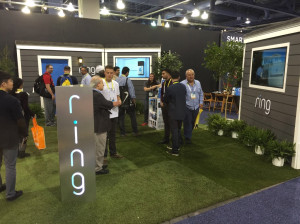Working With Atoms: Thoughts on Building Next-Generation Connected Device Startups
By Adam D'Augelli, February 25, 2015
In 2011, I attended my first Consumer Electronics Show in Las Vegas. While there were a handful of startups scattered throughout the main expo floor, including True-backed Valencell and Makerbot, the majority of companies in attendance were the traditional consumer electronics manufacturers that have ruled the shelves of Best Buy for the past few decades.
After missing CES in 2013 and 2014, I arrived this year expecting to see a similar mix of companies. However, I was thoroughly blown away to see the entire Sands Expo Hall filled with small, emerging consumer electronics businesses—hundreds (if not thousands) of new companies across a variety of brand new categories, including smart homes, digital health and “maker” products. And this didn’t even include the drones and other new technology areas in the main expo hall.
For a market that was dead before 2008, connected devices are back in a big way and are seeing more innovation (and funding) than ever.
At True, we’ve been fortunate to invest in more than 15 new startups selling physical products, including 3D Robotics, Makerbot and Ring. We even hosted an event last year called “True Atoms,” bringing together the best Founders and executives from across the lean hardware ecosystem to share best practices and learn from one another.
And while many trends, including decreased component costs, increased access to smaller-run manufacturing and the growth of cellphones, have made it easier than ever to launch a connected-device company, the challenges of scaling remain incredibly complex.
We previously wrote a blog post talking about hardware companies as “the double black diamond” of startups. One year later, I wanted to share some more thoughts and ideas about what we look for in new opportunities in connected hardware.
Strong brand identity and love of beautiful product
One of the challenges in building hardware companies relates to the number of different end products with which a consumer interacts across a single brand. There is the e-commerce store, mobile and web apps, packaging and more, not to mention the physical product itself. Each of these is a different touch point for the end consumer, and the collective brand needs to flow, despite the Founder not being able to fully design each small piece.
The best companies have thought deeply about their brand values and what really matters for each end customer. With brand deeply ingrained in the company’s culture, it is much easier for individual contributors in the company to espouse the vision and build each piece with the same brand in mind.
For example, the mission at Ring is to “lower the crime rate in neighborhoods worldwide.” The brand, from the product name to how customer service agents interact with customers, focuses on safety and security as a core value. Product design decisions (both physical and virtual) are made with this goal in mind—i.e. the width of the camera lens or enabling motion sensor software in the app.
Similarly, at Madison Reed, each individual who interviews for a role reads a list of company core values, and the interview begins with a conversation about those values and how that individual relates—or doesn’t relate—to them. Once on the job, each team member is responsible for making decisions through the lens of the values and brand, from small messages within the packaging to how “the color crew” interacts with new customers.
Without a deep understanding of the target customer and brand, it is difficult for a small device company to maintain a single focus across all customer interactions. This becomes nearly impossible once the company begins to scale.
Platform, not product
Very few companies can build a large, independent hardware company on top of a single product. And while focus on the details and interaction of the first product is paramount, the Founder needs to be able to think beyond the first product to the long-term platform opportunity—and what products are needed to build out the holistic, hardware/software experience.
For example, True-backed Makerbot initially launched with a DIY 3D printer kit, which an individual assembled themselves from pieces in a box. To compliment that original product, the company launched a repository of printable 3D objects hosted at Thingiverse. After their first round of funding, Makerbot began to expand their market by launching a next-generation printer, which came assembled. The company then released an inexpensive 3D scanner, which enabled users to start scanning objects in their own environment for replication. Next, Makerbot expanded their printer line again and moved up-market with a more expensive device targeted at a professional market.
Each product came from deeply understanding the business’s core customers and meeting their needs by expanding the platform with products targeted to specific segments. Additionally, each product created a network effect that added more value back to the entire platform. Each object scanned by a user could be uploaded to Thingiverse, which added more potential objects a new user could print. This created exponential value for each individual’s experience and expanded the potential value for future customers.
The value of community (or attach rate matters)
Unlike traditional consumer electronics companies, the emerging companies of today have direct relationships to end customers (and their data) via mobile devices. Every new user adds to the value of the network, and the data they produce is an opportunity to fine-tune their product and the overall experience.
For example, Peloton Cycle manufacturers an indoor cycling bike that is equipped with Wi-Fi and an HD touchscreen display so you can stream classes live or watch them on-demand. Because each bike is connected to the Internet, Peloton is able to track users’ progress over time, provide them with fresh content daily, and eventually add social features on top—enabling users to compete against their friends over time or take the same classes together in sync.
Related is attach rate—defined as the percentage of product purchasers who download the app or create an account using their email address. Attach rate matters. Your goal as a company should be 100%. With more data on your end users and their relationship with your product, you can provide an even higher quality experience, which increases switching costs and significantly decreases the cost of remarketing to existing customers.
Reason for users to engage with the software at least once per day
If the brands that defined a consumer’s lifestyle over the past decade were Ford, Procter & Gamble, Coca Cola and McDonald’s, then the next generation will be built by companies like Facebook, Google and other software companies with which consumers interact multiple times per day. With that framework in mind, the best connected device companies will be products with which consumers interact at least once per day, if not more. Each interaction (with the software or hardware) is an opportunity to “wow” the end consumer and get further ingrained into his or her everyday life.
I believe that for physical products, this repeated interaction is what drives increases in net promoter score. It creates both the feeling that consumers can’t live without the product (because they can’t), and it makes them more comfortable to share the product with their friends and family—and, ideally, eventually hold it close to their own personal identity.
Enchanted products that work like magic
Imagine controlling a flying camera via dead-simple software to get the perfect shot; or getting to explore an underwater cave or shipwreck from thousands of miles away with a VR headset; or scanning a copy of your broken shower curtain ring and printing a new one without ever leaving home. Sound futuristic? Not so, as these are all existing experiences powered by True-backed companies such as 3D Robotics, OpenROV and Makerbot.
Every person who experiences one of these products is blown away—it really is like magic—and each product becomes deeply impactful and highly shareable. Not everything in connected devices is as exciting as flying robots, but connected products should strive to deliver that same level of experience to new customers.
Even a less “sexy” product, such as the smart listening system Soundhawk, can blow individuals away when it delivers an amazing device experience powered by software. Wear a Soundhawk scoop out to a crowded restaurant on a Friday night, and you’ll see what I mean.
A few more thoughts
It is easier than ever to start and finance a consumer hardware company, but many challenges around scaling still exist. Before wrapping up, here are some additional quick lessons from the True portfolio:
- Replacing existing objects is hard; augmentation is initially easier and will give you time to build trust with the end customer.
- Market size matters. Even if it is cheaper to get started, understanding how large the potential market could be should affect the amount of capital raised. For example, in home automation, does your product work across all unit types or is it just for homes in the suburbs or rental units?
- Screens are hard. Apple has trained end customers to love retina displays (and each version of their product has continued to improve screen quality over time). It is very difficult to create a similar experience for your customers at a reasonable price point, which may make it seem less valuable to them.
Price point matters. In most cases, the product isn’t just competing with other connected devices, but is more likely competing with traditional, non-connected devices, or occasionally something that is free (like pen and paper or hands).



